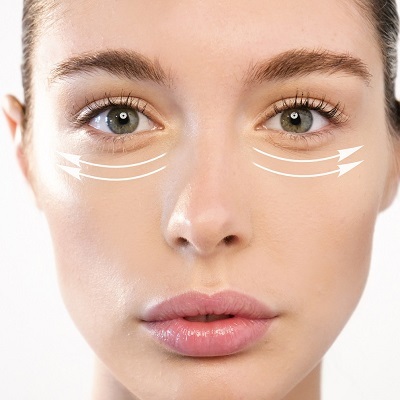Eye bag removal procedures are popular for addressing puffiness and signs of aging around the eyes. If you're considering this treatment, understanding the key aspects beforehand can help ensure a successful outcome. This guide covers essential information to consider before undergoing Eye Bag Removal in Dubai.
Understanding Eye Bag Removal
1. Types of Procedures
Surgical Options:
- Blepharoplasty: A surgical procedure that removes excess skin and fat from the eyelids. It can be performed on the upper eyelids, lower eyelids, or both.
- Upper Blepharoplasty: Removes excess skin and fat from the upper eyelids.
- Lower Blepharoplasty: Targets puffiness and excess skin on the lower eyelids.
Non-Surgical Options:
- Dermal Fillers: Injectable substances that add volume and reduce the appearance of eye bags.
- Laser Treatments: Use laser technology to tighten the skin and improve texture.
- Chemical Peels: Exfoliate the skin to promote new skin growth and improve the appearance of eye bags.

2. Expected Results
Surgical Procedures:
- Immediate Results: Noticeable improvement in the appearance of eye bags.
- Long-Term Results: Typically long-lasting, but aging and lifestyle factors may affect the results over time.
Non-Surgical Procedures:
- Immediate to Short-Term Results: Quick improvement with minimal downtime.
- Maintenance: Results may require periodic treatments for long-term effects.
Preparing for the Procedure
1. Consultation with a Specialist
Why It Matters: A consultation helps determine the most suitable procedure based on your specific needs and goals.
What to Do:
- Discuss Goals: Share your expectations and concerns with your specialist.
- Medical History: Provide detailed information about your medical history and any medications you are taking.
Benefits: Ensures you receive personalized advice and treatment recommendations.
2. Understanding Risks and Complications
Why It Matters: Knowing the potential risks helps you make an informed decision and prepare for possible outcomes.
Common Risks:
- Surgical Risks: Infection, scarring, asymmetry, or complications related to anesthesia.
- Non-Surgical Risks: Bruising, swelling, temporary redness, or allergic reactions.
What to Do:
- Ask Questions: Inquire about specific risks associated with the procedure you're considering.
- Understand Recovery: Be aware of the recovery process and any potential side effects.
Benefits: Helps you prepare mentally and physically for the procedure.
3. Financial Considerations
Why It Matters: Understanding the cost and financial aspects ensures you are prepared for the investment involved.
What to Do:
- Cost Breakdown: Ask for a detailed cost estimate, including procedure fees, anesthesia, and any follow-up care.
- Insurance Coverage: Check if the procedure is covered by your insurance plan or if payment plans are available.
Benefits: Allows you to budget appropriately and avoid unexpected expenses.
Pre-Procedure Preparation
1. Pre-Procedure Instructions
Why It Matters: Following pre-procedure instructions ensures your safety and optimal outcomes.
What to Do:
- Medication: Follow instructions regarding any medications or supplements you should stop or start.
- Lifestyle Adjustments: Avoid smoking and alcohol, as these can affect healing.
Benefits: Helps prepare your body for the procedure and reduces the risk of complications.
2. Arranging Support
Why It Matters: Having support post-procedure can ease the recovery process.
What to Do:
- Arrange Transportation: Ensure you have a way to get home after the procedure, especially if sedation or anesthesia is involved.
- Prepare for Aftercare: Have someone available to assist you with daily tasks if needed.
Benefits: Provides peace of mind and ensures a smoother recovery process.
Post-Procedure Expectations
1. Recovery Time
Why It Matters: Understanding the recovery timeline helps you plan for time off and manage your expectations.
What to Do:
- Surgical Recovery: Plan for a recovery period of several weeks, with initial swelling and bruising.
- Non-Surgical Recovery: Expect minimal downtime, but be aware of any temporary side effects.
Benefits: Helps you plan your schedule and activities around the recovery period.
2. Follow-Up Care
Why It Matters: Follow-up appointments are essential for monitoring your progress and addressing any concerns.
What to Do:
- Attend Appointments: Keep all scheduled follow-up visits with your specialist.
- Report Issues: Inform your provider of any unusual symptoms or concerns.
Benefits: Ensures proper healing and allows for adjustments if necessary.
Long-Term Considerations
1. Maintaining Results
Why It Matters: Long-term maintenance can help preserve the results of your eye bag removal.
What to Do:
- Skincare Routine: Follow a skincare routine that includes sun protection and moisturizing.
- Healthy Lifestyle: Maintain a healthy diet, stay hydrated, and avoid smoking and excessive alcohol consumption.
Benefits: Supports the longevity of the results and overall skin health.
2. Knowing When to Seek Additional Treatment
Why It Matters: Understanding when additional treatments might be needed helps you manage your appearance long-term.
What to Do:
- Monitor Changes: Keep track of any changes in your appearance and consult your provider if needed.
- Consider Touch-Ups: For non-surgical treatments, be aware of the need for periodic touch-ups.
Benefits: Helps maintain the desired appearance and address any new concerns.
Conclusion
Before undergoing eye bag removal, it’s crucial to gather comprehensive information about the procedure, including preparation, potential risks, costs, and recovery. By understanding what to expect and preparing accordingly, you can make an informed decision and ensure a successful outcome. Consult with a qualified specialist to discuss your specific needs and receive personalized advice to achieve the best results.





Comments